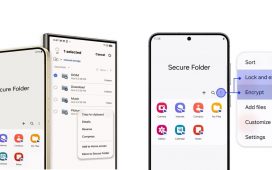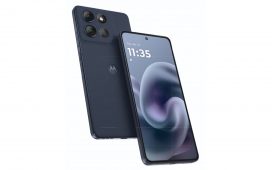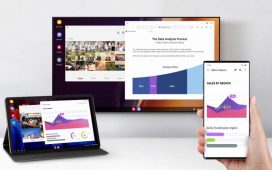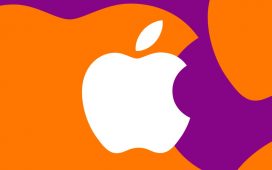The geolocation technology landscape has transformed dramatically since GPS first appeared in consumer devices. From basic car navigation to sophisticated dual-frequency tracking in smartwatches, satellite positioning systems now power countless applications in our daily lives. What started as military technology has evolved into sophisticated consumer technology with centimeter-level accuracy. How did this revolution happen, and what does it mean for your devices?
Evolution of smartphone geolocation: beyond traditional GPS
Before satellite navigation became ubiquitous, smartphones relied primarily on GSM triangulation for location tracking. This method connected devices to multiple cellular towers to estimate position based on signal strength and timing. While functional, this approach offered limited precision, around 200 meters in urban areas with dense tower coverage, but potentially several kilometers in rural regions.
As technology advanced, satellite-based positioning systems revolutionized how our devices navigate. What most people call “GPS” is actually just one of several Global Navigation Satellite Systems (GNSS) now operating worldwide. The American GPS constellation, comprising 31 satellites, pioneered this technology, but it’s no longer alone.
Today’s smartphones and smartwatches typically support multiple GNSS constellations:
- GPS (USA) – Global coverage with 31 satellites
- Galileo (Europe) – Global coverage with 24 satellites
- GLONASS (Russia) – Global coverage with 20 satellites
- BeiDou (China) – Global coverage with 44 satellites
- QZSS (Japan) – Regional coverage with five satellites
- NavIC/IRNSS (India) – Regional coverage with seven satellites
Multi-constellation support delivers faster positioning and increased accuracy, especially in challenging environments like urban canyons or dense forests. European Galileo stands out for its civilian origins and superior accuracy, offering positioning precision within one meter compared to GPS’s three-meter margin.
How satellite positioning actually works
Satellite positioning operates through trilateration rather than triangulation. When your device receives signals from GNSS satellites, it calculates its distance from each satellite based on the time difference between signal transmission and reception.
A single satellite connection establishes your distance from that satellite, creating a sphere of possible locations. Adding a second satellite narrows your position to a circle where two spheres intersect. With a third satellite, your location converges to two possible points, and a fourth satellite pinpoints your exact position on Earth.
| Satellites Connected | Positioning Capability |
| 1 satellite | Distance from satellite only (sphere of possibilities) |
| 2 satellites | Circle of possible locations |
| 3 satellites | Two possible points (2D positioning) |
| 4+ satellites | Precise 3D positioning (latitude, longitude, altitude) |
Your device records these positions at intervals, creating a tracking path typically saved in GPX (GPS eXchange Format) files. These files contain location coordinates, timestamps, and potentially additional data like heart rate, temperature, speed, or elevation—valuable information for fitness tracking, navigation, and outdoor activities.
Dual-frequency: the game-changer in precision tracking
Recent advancements in consumer geolocation technology have introduced dual-frequency GNSS reception, dramatically improving positioning accuracy. Traditional consumer devices used only the L1 frequency band (around 1575.42 MHz for GPS), but newer premium smartphones and watches now also utilize the L5 band (1176.45 MHz).
The L5 frequency was opened for civilian use by the US Space Force in 2014, creating new possibilities for commercial applications. Unlike the military-restricted L2 band, L5 provides enhanced signal characteristics that benefit everyday users.
Dual-frequency reception offers multiple advantages, particularly in challenging environments where signals may be reflected or obstructed. By comparing data from both frequencies, devices can:
- Correct for atmospheric distortion more effectively
- Reduce multipath errors from signal reflection
- Achieve faster position fixes
- Maintain accuracy even with smaller antennas
Premium wearables from manufacturers like Apple, Garmin, Polar, and Coros now prominently advertise dual-frequency support as a key feature. The Apple Watch Ultra, for example, markets its L1+L5 dual-band capability as essential for accurate tracking during outdoor adventures.
Assisted GPS and the future of location technology
Modern devices employ Assisted GPS (A-GPS) to dramatically reduce time-to-first-fix—the delay between activating location services and obtaining your position. Rather than spending minutes searching for satellites, A-GPS leverages internet connectivity to download satellite ephemeris data (orbital position information) through your cellular connection.
This technology combines the best of both worlds: internet-assisted startup with satellite-based positioning accuracy. Without A-GPS, devices must independently download satellite position data directly from space—a slow process that can take several minutes. With A-GPS, your smartphone or watch knows approximately where to look for satellites almost instantly.
Looking ahead, satellite positioning continues to evolve rapidly. Galileo’s next generation aims to offer decimeter-level precision (10cm) for civilian applications. Meanwhile, integration between satellite positioning and other sensors—accelerometers, gyroscopes, barometers, and even camera-based positioning—is creating hybrid systems that work seamlessly indoors and outdoors.
The technological advances in geolocation represent a remarkable journey from basic car navigation to precision tracking that fits on your wrist. As these systems continue to evolve, we can expect even greater accuracy, faster connections, and innovative applications that further integrate positioning technology into our daily lives.






